Westland Wapiti
Westland Wapiti
A military biplane of the 1920s
The Westland Wapiti was a two-seat general-purpose military single-engined biplane of the 1920s. It was designed and built by Westland Aircraft Works to replace the Airco DH.9A in Royal Air Force service. First flying in 1927, the Wapiti entered service with the RAF in 1928, and remained in production until 1932, a total of 565 being built. It equipped twenty squadrons of the RAF, both overseas (particularly in India and Iraq) and at home, remaining in RAF service until 1940, also being used by the Air Forces of Australia, Canada, South Africa and India. It also formed the basis for the Westland Wallace which partly replaced the Wapiti in RAF use.
In 1927, the British Air Ministry issued Specification 26/27 for a replacement of the elderly Airco DH.9A, designed during the First World War which still equipped the Royal Air Force's General Purpose squadrons. To save time and money, the specification called for the use of a high proportion of DH.9A components, (since the RAF still held large stores of DH.9A spares), while it encouraged the use of an all-metal structure. A large number of types were tendered to meet this requirement from most of the major British aircraft manufacturers, including Westland, who submitted the design that later became known as the Wapiti. Westland had an advantage in that it had carried out the detailed design work for the DH.9A, and was already a major contractor for the DH.9A.
The Wapiti was a conventional single-engined equal-span two-bay biplane with a slight wing stagger. It had tandem open cockpits and a fixed main undercarriage plus a tailskid. The forward fuselage was of metal tube structure with aluminium-and-fabric covering, while the rear fuselage was of fabric-covered wooden construction. The wings and tail were standard wooden DH.9A components, although later models replaced the wooden parts with an all-metal structure. The Wapiti was powered by a single Bristol Jupiter radial engine, and its crew of two were armed with a forward-firing Vickers machine gun and a Lewis gun for the observer, while it could carry up to 580 lb (264 kg) of bombs under the wings and fuselage. It was also fitted with radio and photographic cameras, and like the DH.9A before it, could carry a spare wheel for operations in adverse terrain.
In 1934 Harald James Penrose (Westland Aircraft's chief test pilot) attained a height of nearly 28,000 ft. and broke an altitude record for Great Britain in a Westland Wapiti fitted with a Bristol 'Phoenix' compression-ignition engine.
A total of 558 Wapitis were built, plus a further 27 built in South Africa under licence.
The Wapiti is named for the wapiti, also known as elk, one of the largest species of the deer family and one of the largest land mammals in North America and eastern Asia.
![]()
The various
Marks of Wapiti
- all built by
Westland, Yeovil
Wapiti I – Initial production version for the RAF. Wooden structure. Powered by a 420 hp (313 kW) Bristol Jupiter VI radial piston engine. 25 built for RAF.
Wapiti IA – Improved version for the RAAF. Powered by a 480 hp (358 kW) geared Bristol Jupiter VIIIF radial piston engine and divided-axle main undercarriage. 28 built.
Wapiti IB – Similar to the Wapiti IA. Four exported to South Africa. Later re-engined with the 525 hp (392 kW) Armstrong Siddeley Panther. Increased fuel.
Wapiti II – Pre-production version with all-metal rear fuselage and wing structure replacing wooden structures of Wapiti I. Powered by Jupiter VIII engine. 10 built.
Wapiti IIA – Major production version with tropical equipment and partial dual controls, and able to use wheel or float landing gear.[16] Initially powered by Jupiter VIII. 430 built.
Wapiti III – Two-seat general-purpose biplane for the SAAF based on Wapiti IIA. Powered by 480 hp (358 kW) Armstrong Siddeley Jaguar VI or 550 hp (410 kW) Panther VI engines. Four built by Westland followed by 27 under licence in SAAF Workshops.
Wapiti IV – Project for Hispano-Suiza 12N powered aircraft with long fuselage for Spain. One long fuselage aircraft designated Wapiti IV may have been delivered to Chinese Warlord Zhang Xueliang in 1931.
Wapiti V – Long-fuselage army cooperation version for RAF, fitted with message pickup hook, stronger undercarriage and powered by a 600 hp (448 kW) Jupiter VIIIF. 35 built.
Wapiti VI – Unarmed dual control training version for the RAF. 16 built
Wapiti VII – Converted Wapiti V prototype, original designated the Houston-Wallace P.V.6 before reconversion to Wapiti VII experimental aircraft.
Wapiti VIII – Long fuselage version for Central Chinese government. Powered by a Panther IIA, four built.
All the above text based on / 'borrowed' from Wikipedia.
gallery
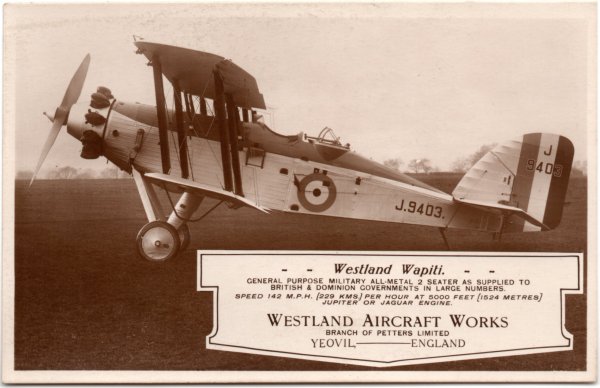
From my
collection
An early (probably 1920's) advertising postcard of the Westland Wapiti.
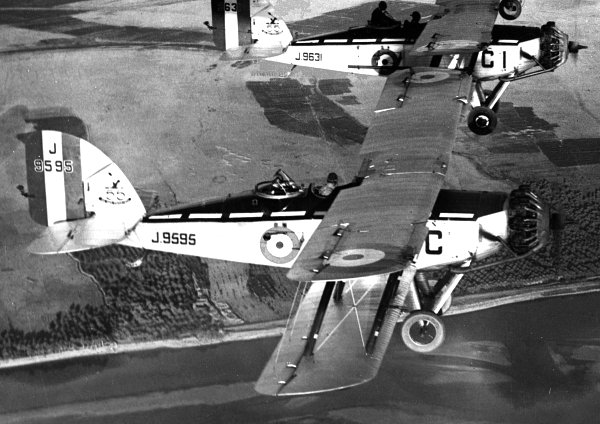
An aerial photograph of a pair of Wapitis.
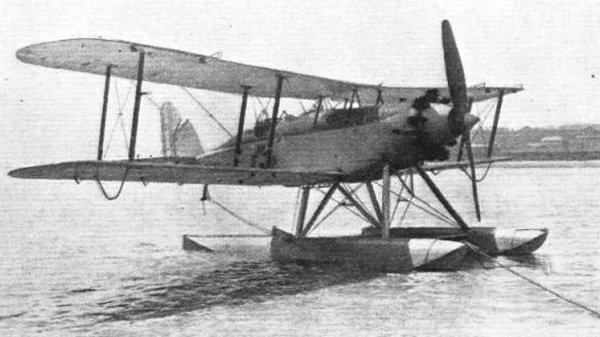
The seaplane version of the Westland Wapiti.
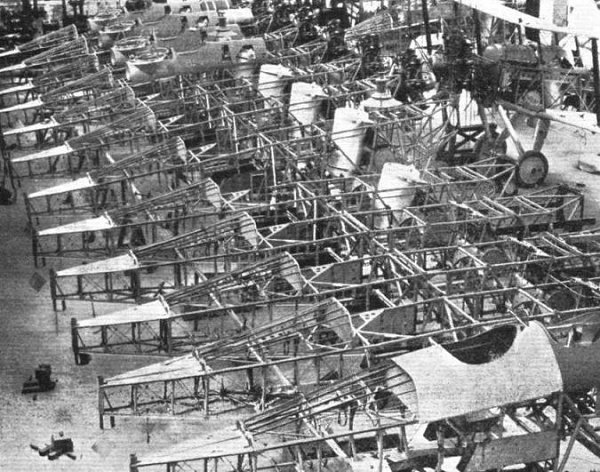
Mass production at Yeovil: This photograph, taken in the Westland Aircraft Works, shows some of the Wapitis, being built for the Royal Air Force. This machine incorporated several novel forms of all-metal construction and the engine fitted was the Bristol 'Jupiter'.
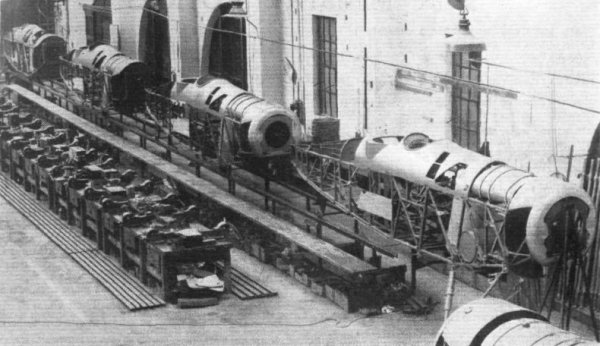
The Westland secondary assembly line. In this, which was 100 ft. long, there was room for four Wapiti fuselages.
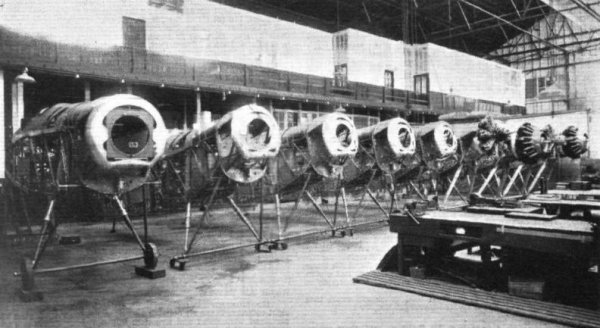
The final assembly line. Small castor wheels were fitted onto the axles to enable the machines to be moved sideways or forward.